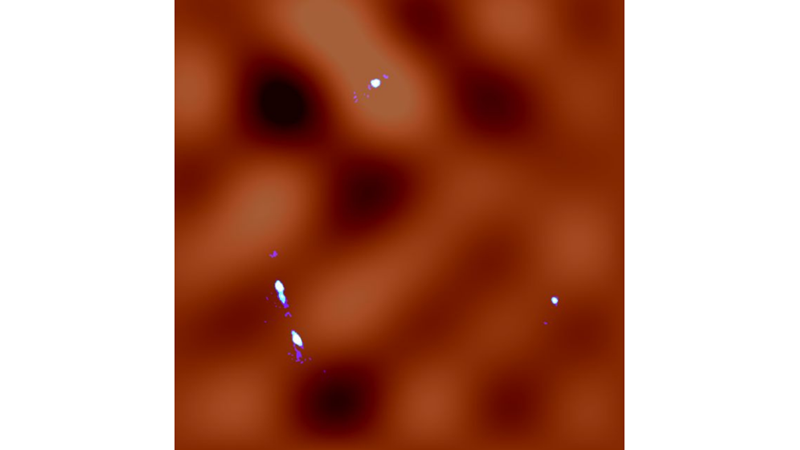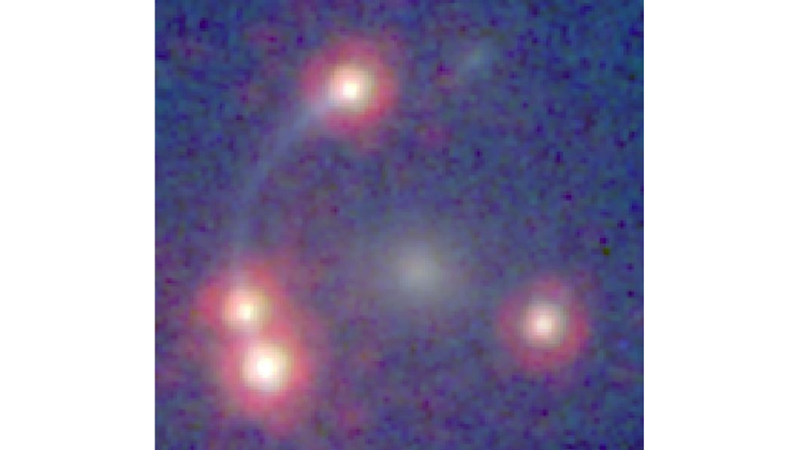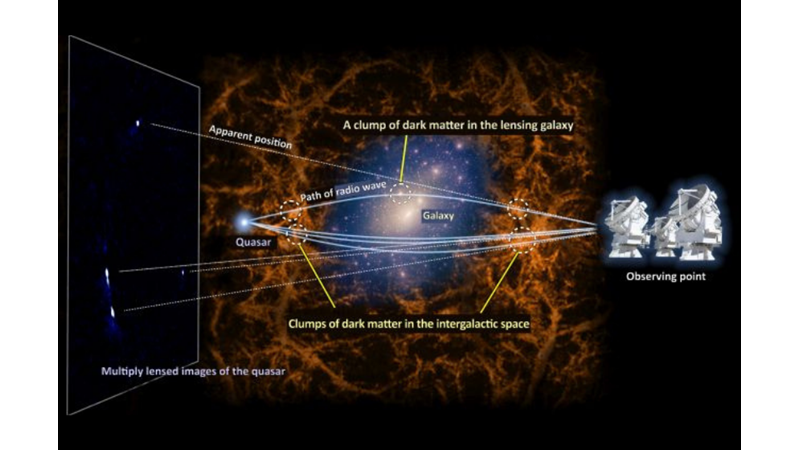The curvature of space-time around a massive mass provided the most detailed measurement yet of the cosmic distribution of dark matter.
With the help of a gravitational lens, a team led by cosmologist Kaiki Taro Inoue of Kindai University in Japan has mapped the mysterious form of matter on the smallest scale we have ever seen, with a resolution of just 30,000 light years.
This may seem large, but when you consider that the Milky Way is about 100,000 light years across, it's even more impressive. Researchers have managed to map something that even we can't see, on a scale smaller than a third of our galaxy, over an area of more than 7.5 billion light-years.
The analysis was based on a fortuitous alignment of cosmic objects known as gravitational lensing. Spacetime curves around large objects in a way that is reminiscent of how a trampoline creates dimples under your body when you sit on it. If you roll the marbles on the trampoline mat, they will not move in a straight line, but in a curved line as they follow the round surface.
Something similar happens to light travelling through space when it encounters curved space-time around a large object, such as a galaxy or a cluster of galaxies. For example, if there is a distant galaxy behind one of these objects, the light from the more distant galaxy will be distorted and magnified as it travels through curved space-time.
One reason this is great is that scientists can study these distant galaxies in much more detail than they could without the lens. But the way light is distorted and scattered can also reveal the distribution of gravity in the foreground lens.
It turns out that this is a perfect way to find out where dark matter is hiding. We don't know what dark matter is; it doesn't emit light, so we can't detect it directly. What we do know is that there is an invisible mass in the Universe that exerts extreme gravity. We can detect the effects of this gravity and thus find out where the mass is hiding.
This still won't tell us what dark matter is, but finding out where it is could help us grasp how it works. In the case of a gravitational lens, when you subtract all the normal matter (i.e. galaxies) from the mass distribution resolved from the distorted light of the background object, what you are left with is dark matter.
This is what Inoue and colleagues did with the gravitationally lensed galaxy MG J0414+0534, whose light took about 11.3 billion years to reach us. The foreground lensing galaxy, which is slightly closer, has distorted this light and split it into four images.
The positions of these split images are completely unaccounted for by the lensing effect of the visible parts of the foreground galaxy. Therefore, using the powerful Atacama Large Millimetre/submillimetre Array and a new analysis technique, the researchers extracted the effects of the visible parts of the lensing galaxy on the distorted light from MG J0414+0534, providing a more detailed map of len's dark matter.
The resulting map supports the theory that there are many dark matter clusters inside galaxies and in the spaces between them, as predicted by the cold dark matter theory. It confirms for the first time that this theory remains consistent on a scale smaller than galaxies.
The researchers say this provides a powerful new tool to aid in the quest to understand dark matter. The inability to resolve its distribution on scales smaller than galaxies has hampered efforts to constrain its properties. Being able to do so will help scientists narrow down the options for the identity of the mysterious, ubiquitous mass.
Source: https://www.sciencealert.com/


 Nielawore
Nielawore











Yorum yazmak için lütfen giriş yapınız